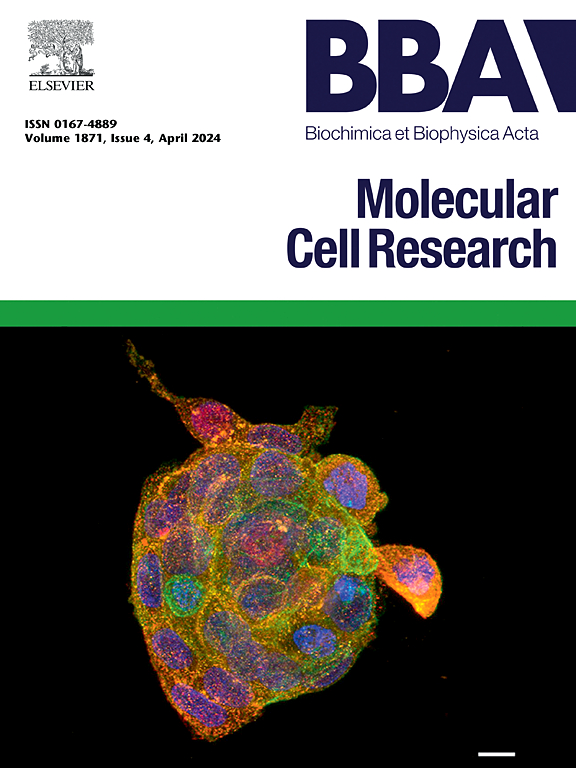Beneficial effects of Glc-1,6-P2 modulation on mutant phosphomannomutase-2
IF 4.6
2区 生物学
Q1 BIOCHEMISTRY & MOLECULAR BIOLOGY
Biochimica et biophysica acta. Molecular cell research
Pub Date : 2025-03-30
DOI:10.1016/j.bbamcr.2025.119948
引用次数: 0
Abstract
The metabolite Glucose-1,6-bisphosphate (Glc-1,6-P2) plays a vital role in human metabolism, and is a crucial activator and stabilizer for phosphomannomutase-2 (PMM2) - mutations within this protein propagate the most common congenital disorder of glycosylation (PMM2-CDG). In vivo, Glc-1,6-P2 is hydrolysed by phosphomannomutase-1 (PMM1), predominantly in the brain, under the influence of inosine monophosphate (IMP). In the present study, we employed knock-out PMM1 in Arg141His/Phe119LeuPMM2 patient-derived fibroblasts and investigated the phenotypic improvement. Increased Glc-1,6-P2 was associated with glycosylation enhancement, confirmed by glycan profiling. Previously identified PMM2-CDG biomarkers, such as LAMP1, PTX3 and lysosomal enzymes showed empirical imrovement- these findings were corroborated by metabolomic and proteomic analysis. Moreover, our results support the potential of Glc-1,6-P2 modulation for PMM2-CDG, potentiating novel perspectives in drug discovery.
求助全文
约1分钟内获得全文
求助全文
来源期刊
CiteScore
10.00
自引率
2.00%
发文量
151
审稿时长
44 days
期刊介绍:
BBA Molecular Cell Research focuses on understanding the mechanisms of cellular processes at the molecular level. These include aspects of cellular signaling, signal transduction, cell cycle, apoptosis, intracellular trafficking, secretory and endocytic pathways, biogenesis of cell organelles, cytoskeletal structures, cellular interactions, cell/tissue differentiation and cellular enzymology. Also included are studies at the interface between Cell Biology and Biophysics which apply for example novel imaging methods for characterizing cellular processes.

 求助内容:
求助内容: 应助结果提醒方式:
应助结果提醒方式:


